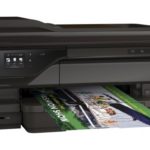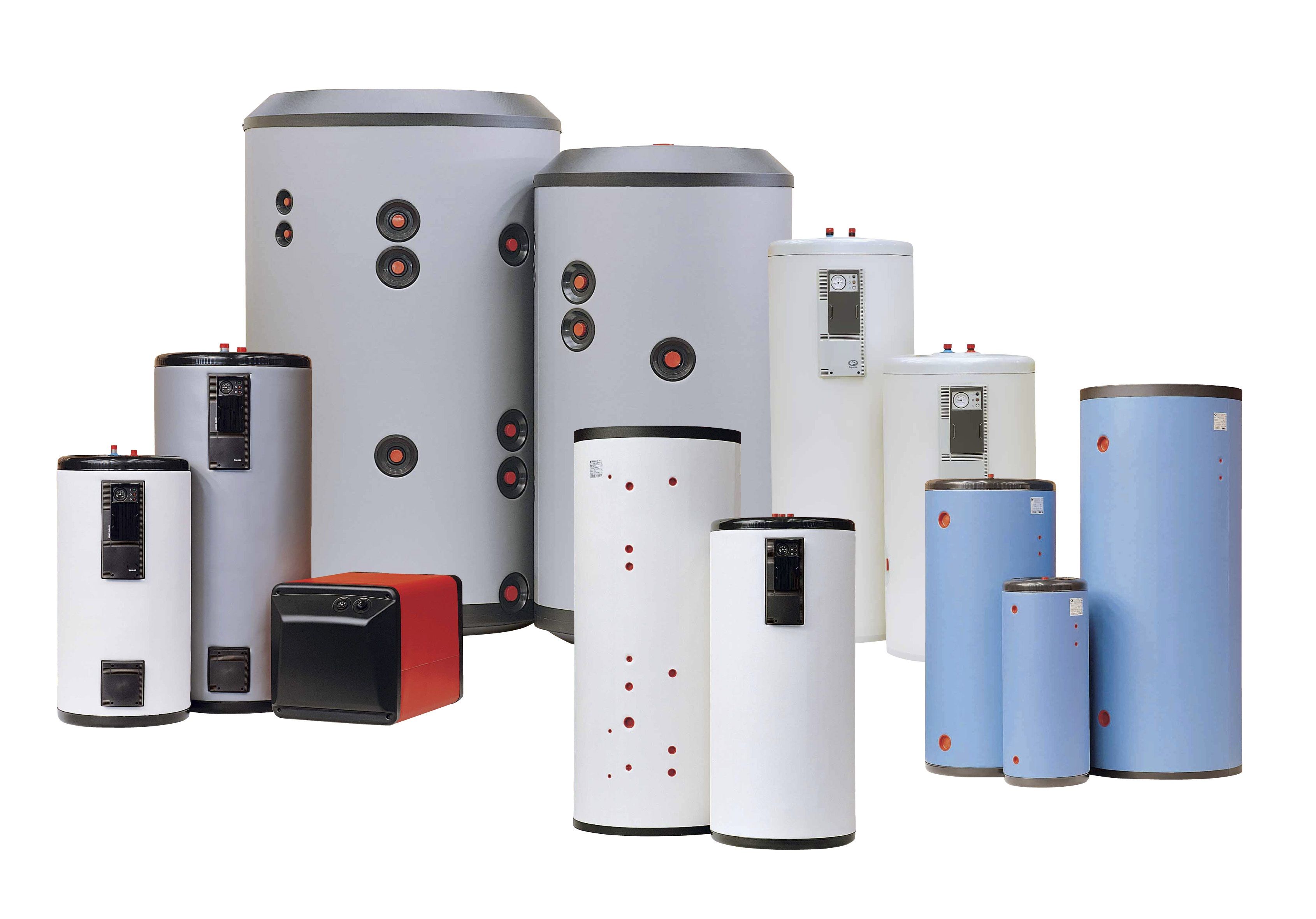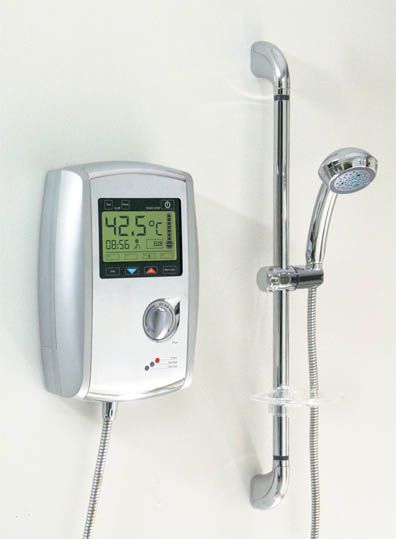Which is better - storage or instantaneous water heater?
A water heater, as the name suggests, is a household appliance designed to heat water when there is no hot water in the water supply. They are used either as a backup source of hot water supply during a short-term outage of hot water, or as the main one, as a rule, in country houses with a local water supply system.
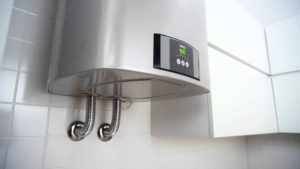
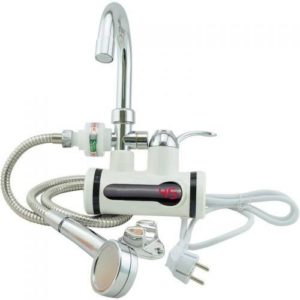
Water heaters are divided into 2 types: instantaneous and storage. Devices of the first type heat water only during its consumption. Flow-through heaters are mostly gas or electric. The latter are divided into open and closed type heaters, as well as pressure and non-pressure, depending on the number of consumers served.
Storage water heaters or boilers include a container in which a constant water temperature is maintained. The design and features of each type of device will be given in more detail below.
The content of the article
Storage water heater, principle of operation
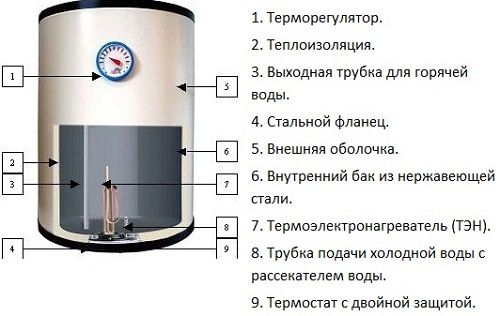 The main elements of a storage water heater are: an internal tank, a tubular electric heater (or heating element), a thermostat and an outer casing with good thermal insulation.
The main elements of a storage water heater are: an internal tank, a tubular electric heater (or heating element), a thermostat and an outer casing with good thermal insulation.
Such a boiler is hung on the wall using powerful mounting anchors or screws.At the inlet, the device is connected to a cold water supply. The output is connected to the internal hot water distribution system, or directly supplied to the end user - shower, sink.
When the device is connected to the electrical network, the water inside the tank is gradually heated using heating elements to a level set by the user. Once the temperature has reached the set temperature, the thermostat is activated and heating stops.
The volume of the storage water heater must be carefully selected based on the expected consumption. Typically, for comfortable use of the shower and bathroom sink by a family of two people, the minimum sufficient storage volume will be 70–100 liters.
For private houses with several bathrooms and a large number of permanent residents, it is advisable to use larger volume boilers: 200–250 liters.
The power of this type of water heater is small, depending on the volume, as a rule, it does not exceed 5–6 kilowatts. For devices with an average volume of 100 liters, the power will be only 2–3 kW. To connect them, a standard socket with standard electrical wiring, with a wire cross-section of 2.5 mm, is quite suitable2.
pros
The advantages of these devices include a wider scope of application due to the lack of special requirements for the electrical network: not all houses, and especially city apartments, have the opportunity to connect to a three-phase network and provide the power level required for flow-through models.
Storage heaters are capable of heating a larger volume of water and providing it to a larger number of consumers. Boilers are also less demanding on pressure.
At the same time, they can produce heating to much higher temperatures, and in the event of a power outage, hot water will continue to flow from the taps for some time, and will not immediately run out.
Minuses
Drives have a number of disadvantages compared to flow-through analogues:
- they take up more space;
- less durable, especially when water is constantly inside the tank;
- consume more energy;
- more demanding for installation - a support capable of supporting a large mass is required;
- are unable to instantly provide a hot stream immediately after switching on;
- can warm a certain volume of water for which the tank is designed, after which the storage tank needs time to prepare a new portion;
- more expensive than flow storage tanks.
Instantaneous water heater, operating principle
The energy source for instantaneous water heaters can be an electric heating element, a gas burner or even solid fuel. Let's consider the simplest and most affordable heater option - electric.
It is a compact device in which the heating element manages to heat the cold water flowing through it. Non-pressure models are designed for single-use use and feature a built-in shower head or spout.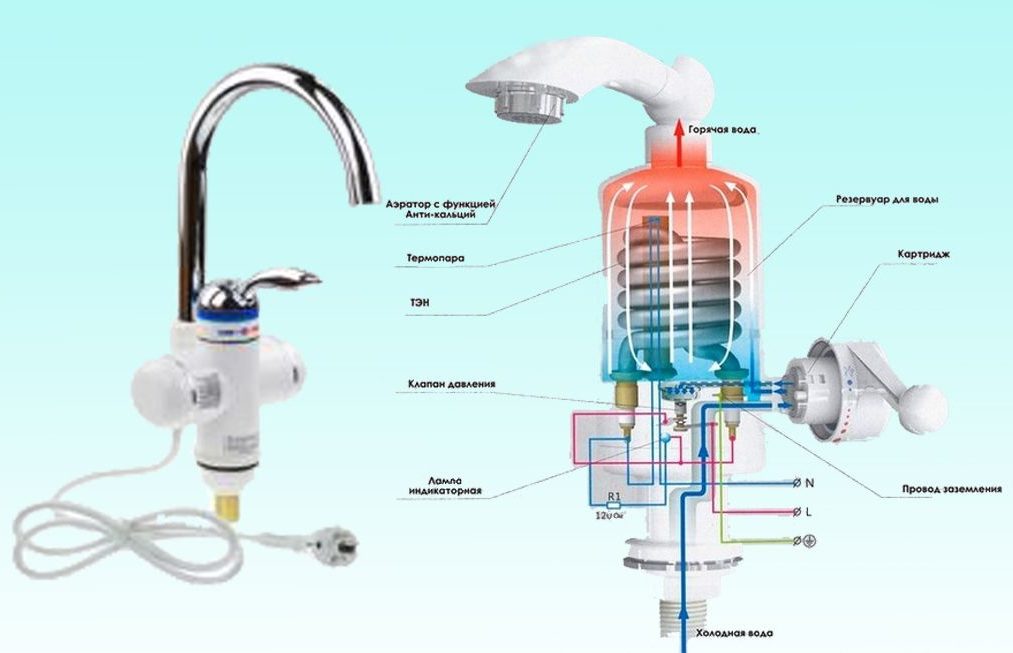
When water flows through the heater, the flow relay directs the liquid to the operating heating element, which is turned on by the built-in automatic control system, as a result of which heating occurs instantly. Thus, the heater has no limitation on the amount of hot water produced, but heating can only occur up to a certain temperature, determined by the power of the device.
There are two types of control systems: hydraulic and electric. The latter have high efficiency and are capable of automatically maintaining a given temperature level at the outlet of the device, regardless of the pressure level.
In open-type flow-through heaters, heating elements directly heat water flowing through the heater. In closed-type devices, water does not come into contact with heating elements; heating is carried out through metal tubes made of copper or brass, through which water passes. Such systems consume less energy, but are less efficient than open systems.
pros
Instantaneous water heaters:
- cheaper than boilers;
- less demanding in terms of installation, since they are much smaller in size and weight;
- can instantly produce warm water, without duration restrictions;
- do not consume electricity when the tap is closed;
- much more efficient and economical.
Minuses
- due to their high power (sometimes several tens of kW), they require a three-phase electrical network and a large resource for consumed electricity;
- low-power devices are not capable of providing high pressure and temperatures above 30–50 degrees (depending on the external temperature of the room).
Conclusion
The choice in favor of one type of heater or another should always be determined by the parameters of the external conditions in which it is intended to be used. First, you should consider the existing limitations: is a three-phase 380 V electrical network available, and will the wiring be able to withstand high levels of electrical current. Secondly, is there room in the panel for the appropriate machine? Third, will the allocated power be enough?
If the answer to at least one of these questions is negative, then it is not advisable to consider the option of an instantaneous water heater, especially if it is necessary to provide hot water to a large number of consumers.
On the other hand, if there are no problems with the electrical network, but there are significant limitations on the space where the device can be installed, or installing a boiler requires labor-intensive and expensive work on laying water pipes to the location of the comb, it makes sense to consider installing a flow-through heater.
In the absence of any of the physical limitations, it is necessary to be guided by the parameters that must be provided by the devices: the amount of simultaneously consumed water or the duration of sampling and its maximum temperature.
Attention! When choosing a household appliance, you should keep in mind: flow-through heaters are more durable, economical to operate and cheaper than storage devices.


